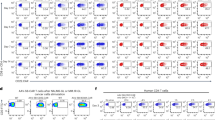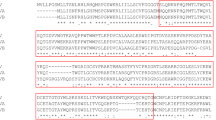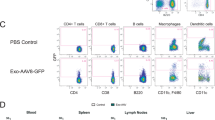Summary:
Adoptive immunotherapy with ex vivo generated cytotoxic T lymphocytes (CTLs) is applied for the treatment of leukemia relapses or viral infections after allogeneic stem cell transplantation. A common problem of adoptive immunotherapy strategies is the ex vivo expansion of the generated T cells to sufficient numbers. CTLs can be efficiently expanded by ectopic expression of the human telomerase gene (hTert). However, hTert transduction may also increase the chance for malignant transformation. Therefore, we explored the feasibility of suicide gene control of ex vivo generated CTLs expanded through the ectopic expression of hTert. To this end, we compared the efficacy of the new Escherichia coli-nitroreductase (E. coli-Ntr) suicide gene with the well-known herpes simplex virus-thymidine kinase (HSV-Tk). Introduction of hTert provided the transduced CTLs with a distinct growth advantage over the nontransduced CTLs. The hTert-E. coli-Ntr double-transduced CTLs retained their antigen-specific functions. Treatment of hTert-E. coli-Ntr double-transduced CTLs with metronidazole significantly inhibited the proliferation to a similar extent to the treatment of hTert-HSV-Tk double-transduced CTLs with ganciclovir. This is the first application of the E. coli-nitroreductase gene for the elimination of human T cells with metronidazole.
This is a preview of subscription content, access via your institution
Access options
Subscribe to this journal
Receive 12 print issues and online access
$259.00 per year
only $21.58 per issue
Buy this article
- Purchase on Springer Link
- Instant access to full article PDF
Prices may be subject to local taxes which are calculated during checkout



Similar content being viewed by others
References
Weiden PL, Flournoy N, Thomas ED et al. Antileukemic effect of graft-versus-host disease in human recipients of allogeneic-marrow grafts. N Engl J Med 1979; 300: 1068–1073.
Weiden PL, Sullivan KM, Flournoy N et al. Antileukemic effect of chronic graft-versus-host disease: contribution to improved survival after allogeneic marrow transplantation. N Engl J Med 1981; 304: 1529–1533.
Kolb HJ, Mittermuller J, Clemm C et al. Donor leukocyte transfusions for treatment of recurrent chronic myelogenous leukemia in marrow transplant patients. Blood 1990; 76: 2462–2465.
Kolb HJ, Schattenberg A, Goldman JM et al. Graft-versus-leukemia effect of donor lymphocyte transfusions in marrow grafted patients. European Group for Blood and Marrow Transplantation Working Party Chronic Leukemia. Blood 1995; 86: 2041–2050.
Goulmy E . Human minor histocompatibility antigens: new concepts for marrow transplantation and adoptive immunotherapy. Immunol Rev 1997; 157: 125–140.
Mutis T, Verdijk R, Schrama E et al. Feasibility of immunotherapy of relapsed leukemia with ex vivo-generated cytotoxic T lymphocytes specific for hematopoietic system-restricted minor histocompatibility antigens. Blood 1999; 93: 2336–2341.
Riddel SR, Watanabe KS, Goodrich JM et al. Restoration of viral immunity in immunodeficient humans by the adoptive transfer of T cell clones. Science 1992; 257: 238–241.
Falkenburg JH, Wafelman AR, Joosten P et al. Complete remission of accelerated phase chronic myeloid leukemia by treatment with leukemia-reactive cytotoxic T lymphocytes. Blood 1999; 94: 1201–1208.
Mitchell MS, Darrah D, Yeung D et al. Phase I trial of adoptive immunotherapy with cytolytic T lymphocytes immunized against a tyrosinase epitope. J Clin Oncol 2002; 20: 1075–1086.
Effros RB, Pawelec G . Replicative senescence of T cells: does the Hayflick Limit lead to immune exhaustion? Immunol Today 1997; 18: 450–454.
Cong YS, Wright WE, Shay JW . Human telomerase and its regulation. Microbiol Mol Biol Rev 2002; 66: 407–425.
Kim NW, Piatyszek MA, Prowse KR et al. Specific association of human telomerase activity with immortal cells and cancer. Science 1994; 266: 2011–2015.
Maini MK, Soares MV, Zilch CF et al. Virus-induced CD8+ T cell clonal expansion is associated with telomerase up-regulation and telomere length preservation: a mechanism for rescue from replicative senescence. J Immunol 1999; 162: 4521–4526.
Hooijberg E, Ruizendaal JJ, Snijders PJ et al. Immortalization of human CD8+ T cell clones by ectopic expression of telomerase reverse transcriptase. J Immunol 2000; 165: 4239–4245.
Rufer N, Migliaccio M, Antonchuk J et al. Transfer of the human telomerase reverse transcriptase (TERT) gene into T lymphocytes results in extension of replicative potential. Blood 2001; 98: 597–603.
Bonini C, Ferrari G, Verzeletti S et al. HSV-TK gene transfer into donor lymphocytes for control of allogeneic graft-versus-leukemia. Science 1997; 276: 1719–1724.
Tiberghien P, Ferrand C, Lioure B et al. Administration of herpes simplex-thymidine kinase-expressing donor T cells with a T-cell-depleted allogeneic marrow graft. Blood 2001; 97: 63–72.
Klatzmann D, Cherin P, Bensimon G et al. A phase I/II dose-escalation study of herpes simplex virus type 1 thymidine kinase ‘suicide’ gene therapy for metastatic melanoma. Hum Gene Ther 1998; 9: 2585–2594.
Klatzmann D, Valery CA, Bensimon G et al. A phase I/II study of herpes simplex virus type I thymidine kinase ‘suicide’ gene therapy for recurrent glioblastoma. Hum Gene Ther 1998; 9: 2595–2604.
Bailey SM, Knox RJ, Hobbs SM et al. Investigation of alternative prodrugs for use with E. coli nitroreductase in ‘suicide gene’ approaches to cancer therapy. Gene Therapy 1996; 3: 1143–1150.
Bridgewater JA, Knox RJ, Pitts JD et al. The bystander effect of the nitroreductase/CB 1954 enzyme/prodrug system is due to a cell-permeable metabolite. Hum Gene Ther 1997; 8: 709–717.
Green NK, Youngs DJ, Neoptolemos JP et al. Sensitization of colorectal and pancreatic cancer cell lines to the prodrug 5-(aziridin-1-yl)-2,4-dinitrobenzamide (CB1954) by retroviral transduction and expression of the E. coli nitroreductase gene. Cancer Gene Ther 1997; 4: 229–238.
McNeish IA, Green NK, Gilligan MG et al. Virus directed enzyme prodrug therapy for ovarian and pancreatic cancer using retrovirally derived E. coli nitroreductase and CB1954. Gene Therapy 1998; 5: 1061–1069.
Nishihara E, Nagayama Y, Narimatsu M et al. Treatment of thyroid carcinoma cells with four different suicide gene/prodrug combinations in vitro. Anticancer Res 1998; 18: 1521–1526.
Bridgewater JA, Springer CJ, Knox RJ et al. Expression of the bacterial nitroreductase enzyme in mammalian cells renders them selectively sensitive to killing by the prodrug CB1954. Eur J Cancer 2000; 31a: 2362–2370.
Plumb JA, Bilsland A, Kakani R et al. Telomerase-specific suicide gene therapy vectors expressing bacterial nitroreductase sensitize human cancer cells to the pro-drug CB1954. Oncogene 2001; 20: 7797–7803.
Drabek D, Guy J, Craig R et al. The expression of bacterial nitroreductase in transgenic mice results in specific killing by the prodrug CB1954. Gene Therapy 2000; 4: 93–100.
Gillespie G, Mutis T, Schrama E et al. HLA class I-minor histocompatibility antigen tetramers select cytotoxic T cells with high avidity to the natural ligand. Hematol J 2000; 1: 403–410.
Hofmann A, Nolan GP, Blau HM . Rapid retroviral delivery of tetracycline-inducible genes in a single autoregulatory cassette. Proc Natl Acad Sci USA 1996; 93: 5185–5190.
Hanenberg H, Xiao XL, Dilloo D et al. Colocalization of retrovirus and target cells on specific fibronectin fragments increases genetic transduction of mammalian cells. Nat Med 1996; 2: 876–882.
de Bueger M, Bakker A, van Rood JJ et al. Tissue distribution of human minor histocompatibility antigens. Ubiquitous versus restricted tissue distribution indicates heterogeneity among human cytotoxic T lymphocyte-defined non-MHC antigens. J Immunol 1992; 149: 1788–1794.
Tiberghien P, Reynolds CW, Keller J et al. Ganciclovir treatment of herpes simplex thymidine kinase-transduced primary T lymphocytes: an approach for specific in vivo donor T-cell depletion after bone marrow transplantation? Blood 1994; 84: 1333–1341.
Thomis DC, Marktel S, Bonini C et al. A Fas-based suicide switch in human T cells for the treatment of graft-versus-host disease. Blood 2001; 97: 1249–1257.
Jiang XR, Jimenez G, Chang E et al. Telomerase expression in human somatic cells does not induce changes associated with a transformed phenotype. Nat Genet 1999; 21: 111–114.
Craperi D, Vicat JM, Nissou MF et al. Increased Bax expression is associated with cell death induced by ganciclovir in a Herper thymidine kinase gene-expressing glioma cell line. Hum Gene Ther 1999; 10: 679–688.
Wei SJ, Chao Y, Shih YL et al. Involvement of Fas (CD95/APO-1) an Fas ligand in apoptosis induced by ganciclovir treatment of tumor cell transduced with herpes simplex virus thymidine kinase. Gene Therapy 1999; 6: 420–431.
Wang J, Liu X, Jiang W, Liang L . Telomerase activity and expression of the telomerase catalytic subunit gene in non-small cell lung cancer: correlation with decreased apoptosis and clinical prognosis. Chin Med J 2000; 113: 985–990.
Shay JW, Bacchetti S . A survey of telomerase activity in human cancer. Eur J Cancer 1997; 33: 787–791.
Clark AJ, Iwobi M, Cui W et al. Selective cell ablation in transgenic mice expressing E. coli nitroreductase. Gene Therapy 1997; 4: 101–110.
Acknowledgements
This work was supported in part by grants from the Dutch Cancer Society, the Leiden University Medical Center and the European FP5 grant: EU QLRT-2000-01265. We thank Dr L Oosten for help with the IFN-γ measurements and Drs R Offringa and B Wieles for reading the manuscript.
Author information
Authors and Affiliations
Corresponding author
Rights and permissions
About this article
Cite this article
Verdijk, R., Wilke, M., Beslier, V. et al. Escherichia coli-nitroreductase suicide gene control of human telomerase reverse transcriptase-transduced minor histocompatibility antigen-specific cytotoxic T cells. Bone Marrow Transplant 33, 963–967 (2004). https://doi.org/10.1038/sj.bmt.1704470
Received:
Accepted:
Published:
Issue Date:
DOI: https://doi.org/10.1038/sj.bmt.1704470



